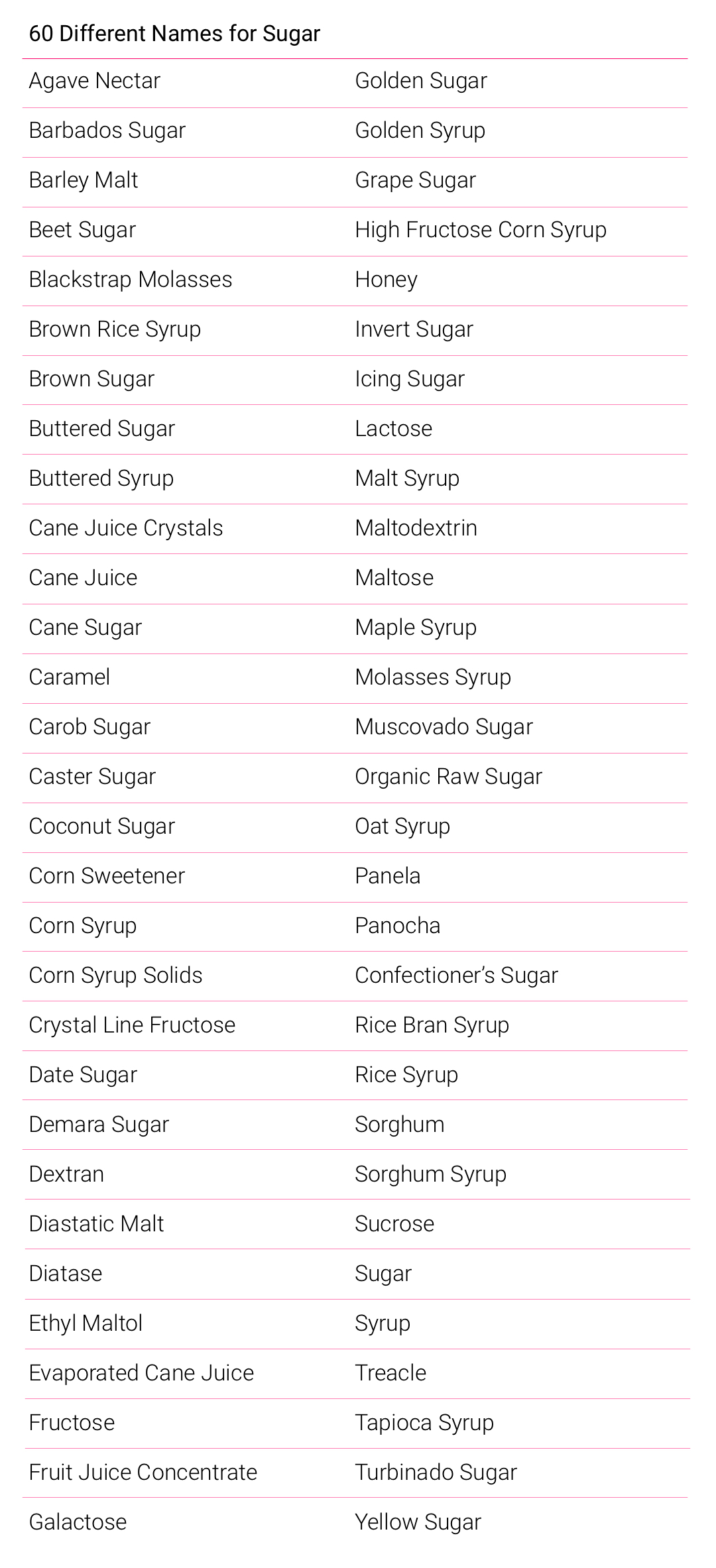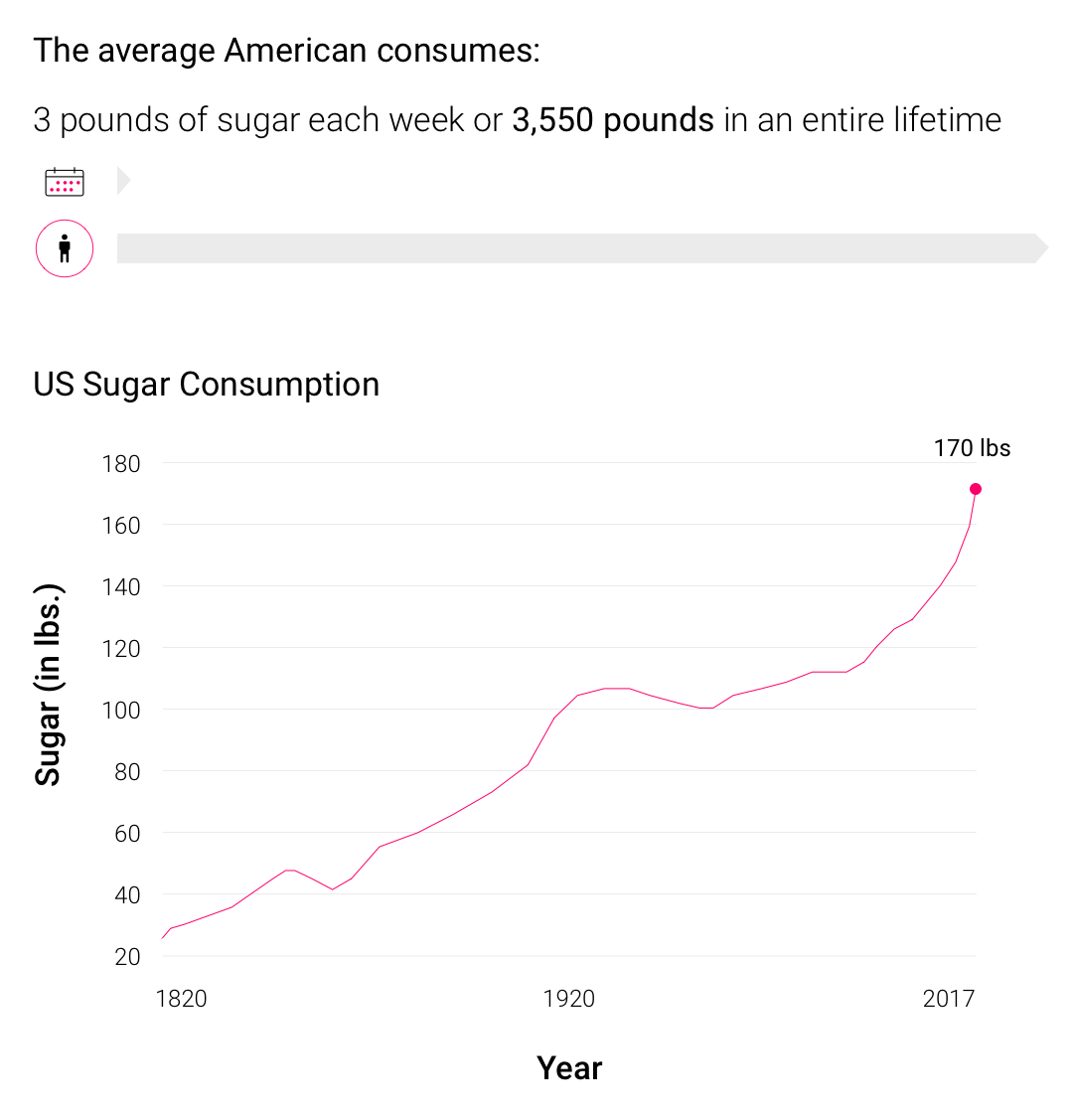Updated 8/18/22
Read time: 4 minutes
- Sugar gets a bad rap, but it’s the preferred energy source for most cells in the body.
- Sugar doesn’t have to come from “table sugar” or processed foods; it’s naturally occurring in a variety of nutrient-dense foods.
- Finding balance in the type and amount of sugar you consume is key for healthy eating.
In the world of diabetes, “sugar” often gets a bad rap. It can be a culprit for driving blood sugar up and keeping A1C elevated. If you’ve recently been diagnosed with diabetes and you’re feeling overwhelmed with how to manage sugar, you may be asking yourself: do we need sugar at all?
Let’s dive into sugar, so you can make informed decisions about how and when to include it in your eating plan and find out if you can you survive without sugar.
Breaking It Down
Did you know that there are more than 60 different names for sugar? For example, cane sugar, brown sugar, coconut sugar, syrup, honey, agave, and maltodextrin to name a few.
Often, the first type of sugar that comes to mind is the white, crystalized version added to cakes, pastries, lollipops, key lime pies, and many other sweet treats.
This is what's commonly known as table sugar. And it's very good at hiding in many foods we eat.
But, sugar can also be naturally occurring in foods like fruits, milk, honey, and pure maple syrup.
Plus, when we eat starchy foods, like breads, cereals, and grains, our body breaks down chains of starches into easily digestible sugars. The body even has a way to convert proteins and fat into a form of sugar.
Why do our bodies have a way to make their own sugar? Because glucose, the main type of sugar in the blood, is necessary for survival. So, can you survive without sugar? Not exactly.
Glucose at the Core
Glucose is the preferred source of energy for most of our cells. When we eat, most carbohydrates are broken down into glucose which then enters the bloodstream. Glucose in the blood can then be transported to the body’s cells, providing a quick and efficient energy source. Easy-to-digest carbs can be a life-saver (literally!) when blood sugars drop too low and a quick treatment is needed. Their ability to rapidly provide energy to our cells also makes them a preferred source of mid-workout fuel for athletes like endurance runners or bikers.
And it's not just humans who are dependent on glucose. Nearly all forms of life, right down to algae, use glucose to survive.
What it comes down to is that we do need sugar. Glucose, to be exact. However, we don't need to eat sugar to get glucose.
Are All Sugars Created Equal?
The glucose we need to survive can come from just about… anything.
Fruits, vegetables, nuts, seeds, whole grains, and other nutrient-dense foods contain naturally occurring sugars and/or starches that can be broken down into glucose and other forms of sugar such as galactose and fructose. Galactose is commonly found in milk and dairy products. Fructose is naturally found in foods like fruits, sugar beets, and honey.
Unlike glucose, galactose and fructose need to be processed in the liver before they can be used for energy. This difference has led to a lot of debate about whether these types of sugars, fructose in particular, are worse for us then other types of sugar. But the results of most studies show that fructose isn’t worse than any other sugars.
Any form of sugar when eaten in excess is bad for our health and typically “excess sugar” comes from eating processed foods with added sugars and refined starches. (For the lowdown on processed foods, check out our article “What Exactly Is a Processed Food?”)
How to Fuel Your Body Naturally
For your body to get just the right amount of glucose needed for energy, without getting too much, the American Diabetes Association recommends the following:
- Fill up at least half your plate with non-starchy unprocessed vegetables such as spinach, cucumbers, tomatoes, green beans, bok choy, or artichokes.
- Fill up a quarter of your plate with these: minimally processed, fiber-rich carbohydrate foods such as whole grains, sweet potatoes, beans, lentils, brown rice, apples, strawberries, or peaches.
- Limit foods with added sugar and highly processed carbohydrate foods like white rice, white bread, soda, sugary cereal, crackers, chips, and cookies.
This article has been clinically reviewed by Alexa Stelzer, RDN, LD, CDCES, clinical health coach at One Drop.






